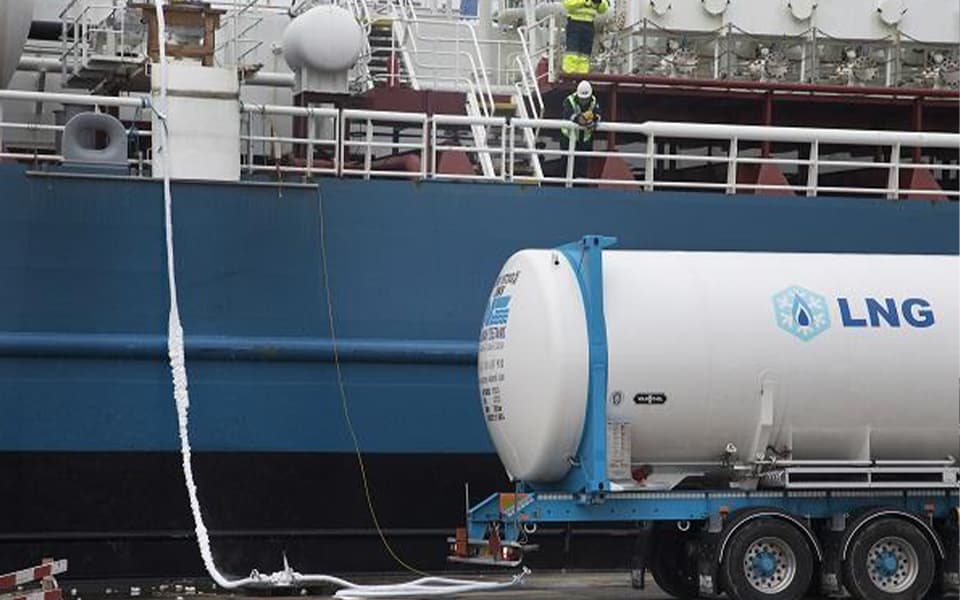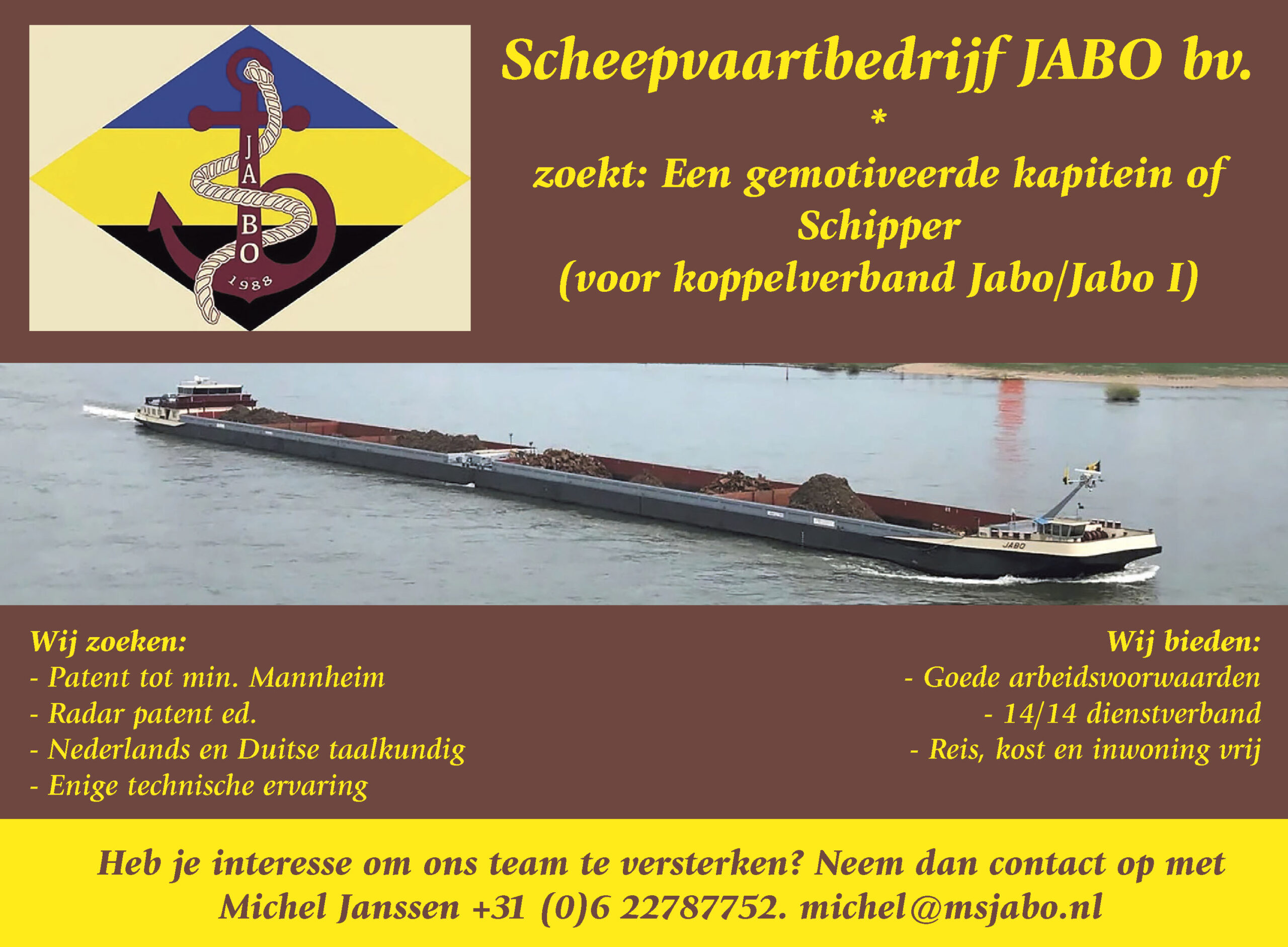PORT OF AMSTERDAM
Period: donderdag, 4 juni, 2020 – 15:59
Area: Amsterdam Noordzeekanaalgebied
De directeur van het Centraal Nautisch Beheer Noordzeekanaalgebied maakt het volgende bekend:
Bij het bunkeren van Liquefied Natural Gas (LNG) door een LNG-bunkerschip naar een LNG-aangedreven schip is het nodig om eisen te stellen aan andere havengebruikers, de passerende scheepvaart, zodat die op veilige afstand blijven van de LNG-bunkering. Hierdoor wordt het aanvaringsrisico beperkt en kan de passerende scheepvaart niet dienen als bron van ontsteking bij de minieme kans in het geval van eventueel gelekt LNG.
De passerende scheepvaart weet dat er LNG gebunkerd wordt, omdat het zeeschip de internationale seinvlag “B” of een rood helder rondom schijnend licht voert, en vanwege de aanwezigheid van een LNG-bunkerschip.
Bij het bepalen van de afstanden is pragmatisch aansluiting gezocht bij afstanden zoals die in het BPR en het RPR gehanteerd worden.
Binnenvaart
De passeerafstand voor binnenvaart is gesteld op minimaal 10 meter. Aangezien binnenvaart goed manoeuvreerbaar en dus snel wendbaar is, geldt de 10 meter passeerafstand in alle gevallen, zowel varend in de haven als bij aankomst en vertrek in de buurt van een ligplaats waar LNG gebunkerd wordt.
Zeevaart
Voor zeevaart is bij aankomst en vertrek in de buurt van een ligplaats waar LNG gebunkerd wordt een veiligheidsfactor 2 gehanteerd qua passeerafstand, uitkomende op twee maal tien meter, zijnde twintig meter.
Voor varende zeevaart is qua passeerafstand aansluiting gezocht bij artikel 10.09 van het BPR. Dit artikel schrijft een afstand voor van 50 meter aan te houden tot schepen die zijn beladen met gevaarlijke stoffen. Omdat zeeschepen die LNG bunkeren een zelfde seinvoering hebben en omdat er door de hogere vaarsnelheid een grotere veiligheidsmarge nodig is dan de twintig meter bij aanmeren of ontmeren, is aangesloten bij deze 50 meter.
Het besluit is te vinden via een link op de internetsite van Havenbedrijf Amsterdam N.V, https://www.portofamsterdam.com
De directeur van het Centraal Nautisch Beheer Noordzeekanaalgebied, tevens Rijkshavenmeester,
J.H.M. Mateyo
————————————————————————————————————————-
Publication of the Decree adopting Passing Distances to LNG Bunker ships engaged in LNG bunkering operations
Period: Thursday, June 4, 2020 – 15:59
Area: Amsterdam Noordzeekanaalgebied
The Director of the Public Body Central Nautical Management North Sea Canal Area announces the following:
When an LNG bunker ship is bunkering Liquefied Natural Gas (LNG) to an LNG-powered ship, requirements must be imposed on other port users and passing ships to keep them at a safe distance from the LNG bunkering operations. These requirements reduce the risk of collision and ensure that passing ships do not pose a source of ignition in the event of leakage of LNG – although such leakage has a very low probability of occurring.
Passing ships are aware of LNG bunkering operations because the seagoing ship exhibits the International Code of Signals flag “B” by day and a bright all-round fixed red light by night; they are also aware of this because there is an LNG bunker ship alongside.
In determining the distances, a pragmatic link has been sought with the distances used in the Inland Navigation Police Regulations (BPR) and the Rhine Navigation Police Regulations (RPR).
Inland ships
The minimum passing distance for inland ships is set at 10 metres. Inland ships have good manoeuvrability and that is why the 10-metre passing distance applies in all cases, both when they are underway in the port and arriving at or departing from a berth close to where LNG is being bunkered.
Seagoing ships
For seagoing ships, arriving at or departing from a berth close to where LNG is being bunkered, a safety factor of 2 applies, resulting in a passing distance of 20 metres (2 times 10).
For seagoing ships underway, a link has been sought with the distances used in article 10.09 of the BPR. This article prescribes a distance of 50 metres from ships loaded with hazardous substances. Seagoing ships engaged in LNG bunkering operations must exhibit the same lights and shapes as prescribed in BPR 10.09; and because seagoing ships underway require a greater safety margin than the 20 metres required during arrival or departure, a link has been sought with the distance of 50 metres.
This Decree can be found on the internet site of Port of Amsterdam at https://www.portofamsterdam.com
The Director of the Central Nautical Management North Sea Canal Area, who is also the State Harbour Master,
J.H.M. M. Mateyo







